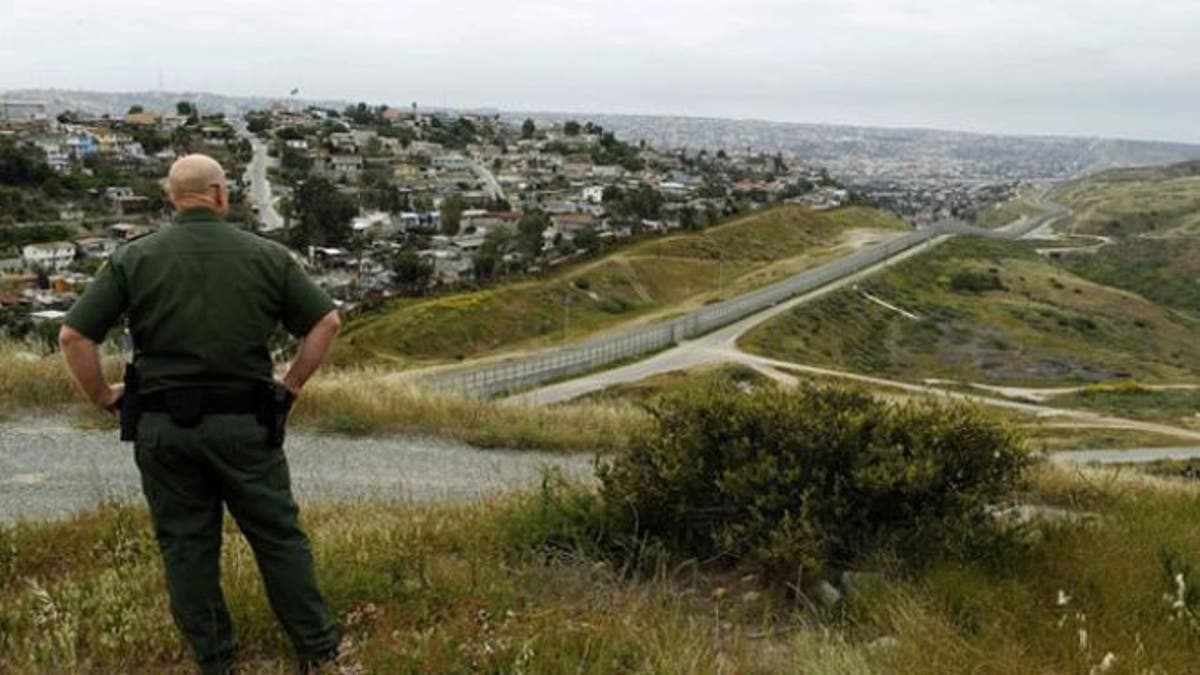
April 13, 2011: United States border patrol agent Shawn Gisler looks across the fence at Mexico as he patrols the U.S. border in San Ysidro, California. (AP)
BUENOS AIRES NATIONAL WILDLIFE REFUGE, Ariz. – Thorn-coated bushes, rock-covered terrain, scorching temperatures. A hissing rattlesnake.
These are just few of the many perils migrants crossing from Mexico into the southern Arizona desert encounter every day. And far more of them will attempt to cross this summer, the U.S. Border Patrol predicts.
The agency unveiled its plans Wednesday for dealing with the problem of immigrants dying in the desert, including 10 new beacons that allow migrants to call for help at the push of a red button. The agency is also adding new hoisting systems on helicopters to rescue immigrants.
Officials from the Tucson sector on Wednesday gave reporters, government officials and immigration activists a demonstration of the latest tools they have to assist those who cross from Mexico into Arizona and get injured or dehydrated and cannot continue walking. The demonstration was held 20 miles north of the Sasabe port of entry to Mexico, southwest of Tucson, and included a nearly one-mile hike through rough terrain where migrants often cross.
The border patrol says it sees a steep increase in calls for help coming from its 22 beacons as the summer approaches.
"The smugglers are telling people, 'oh it's going to be a short walk, it's not going to be a big deal,' when the reality is you're looking at 114 degree temperatures, this very rugged terrain that you see behind us, and once they cross the border, many times they're abandoned there and left vulnerable to the elements of the desert," Tucson sector chief Manuel Padilla, Jr., said.
"It's either they live or die. They make the call right away," agent Ricardo Cardiel said.
The beacons are 30-feet-tall and solar powered. They have sun reflectors and blue lights on top that are visible for 10 miles. The beacons have signs in three languages that direct users to push a red button that sends out a signal for help. Response times vary from 10 minutes to an hour depending on where the nearest agents are located.
Agents found 194 bodies and rescued 802 people in the desert in fiscal year 2013. There have been about 38 deaths this year, Padilla said. The Tucson sector covers 262 miles along the Arizona-Mexico border.
The border patrol has launched a campaign to inform potential migrants of the dangers they'll encounter crossing the Sonoran Desert.
During a nearly one-mile hike through a tree-covered area used by migrants, reporters encountered rough terrain, bushes coated in thorns and even a hissing rattlesnake.
An old backpack, jacket and what one border agent called "chanclas" — Spanish slang for shoes — littered the way. Temperatures in the summer average about 113 degrees, officials say, although Wednesday was breezy and cool.
Juanita Molina, executive director of Human Borders, Inc., a humanitarian group, says the border patrol's efforts are greatly needed. Although migrant crossings have decreased over the last few years, the percentage of people who die attempting to cross has increased from about 150 a year to nearly 200 last year.
"I think that everything we can do to bring awareness to the deaths in the desert is absolutely critical," she said.

